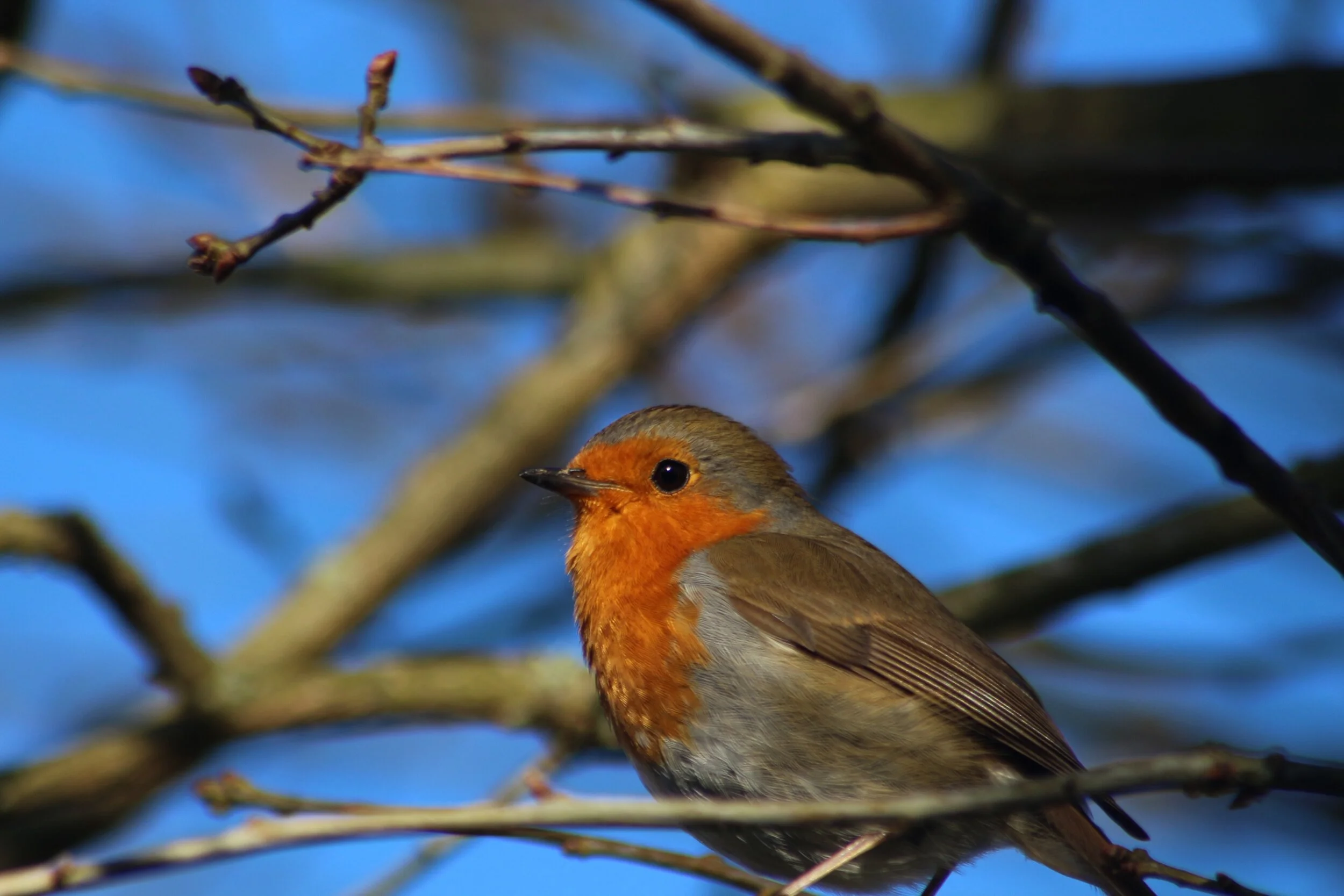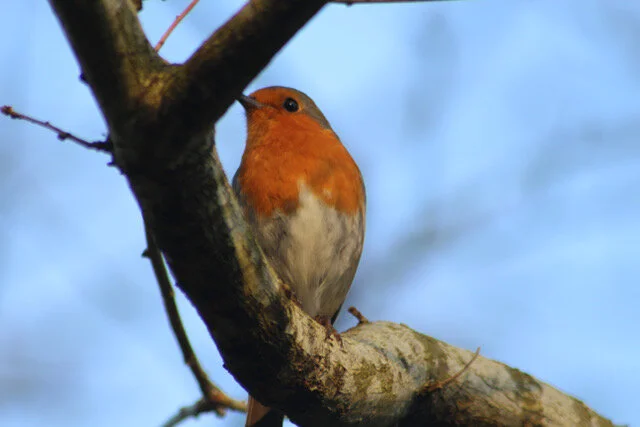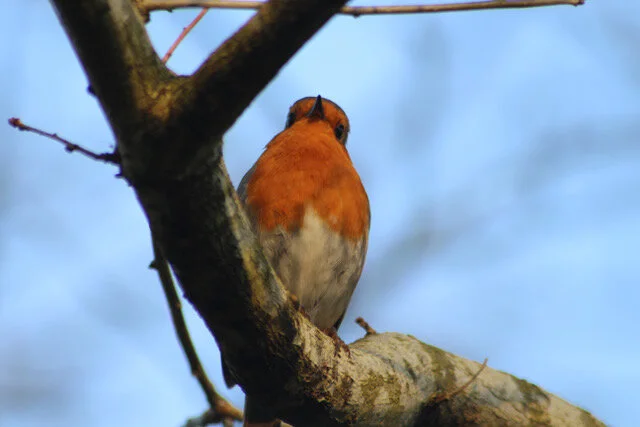Winter Treasures: The Wonderful World of Robins
Bestowed with the title of Britain’s favourite garden bird species, robins are Christmas card perfection with their fire-red breasts and enthralling sonatas. Rosy Fox explores why their inherent beauty, tenacity and zest for life make them a popular player in the natural world.
As the increasingly cold months drive away a host of bird species from the British Isles in search of some much-needed winter sun, one familiar character remains to guard our gardens all-year-round: the infamous robin (Erithacus Rubecula). With an irrefutable reputation as the country’s most popular bird, robins boast both beauty and brains, granting them superstar status in the avian world.
Here are three juicy tidbits about rambunctious robins to make you fall in love this winter…
Photo: Darren Probert
Despite their whimsical and sociable charade, these cheeky chaps are highly defensive when it comes to protecting their home and breeding area from dubious outsiders. The distinctive burnt-orange breast that the nation adores provides a valuable evolutionary function that both sexes use to resolve territorial quarrels. Robins can occupy the same breeding range throughout their lives, and employ fierce protection strategies to defend their territory throughout the entirety of the winter period; both sexes continue to sing throughout the season to ferociously drive away trespassers. These vicious villains have been reported to confront chunks of orange plumages – or in some circumstances their own reflection – if they confuse it for an unknown robin.
Photo: Mark Crisp
When you venture out for a winter wander, keep a beady eye peeled for any robins loitering in the branches, watching your every move. Robins and humans have a long history together, and they use us to locate vital food sources. These cunning creatures are well-known for shadowing humans, monitoring closely as the soil is disrupted under our feet and numerous invertebrates are unearthed and exposed as a scrummy, accessible meal. This ingenious behaviour originated in European woodlands where wild boar foraged for food in the earth, and the robin cleverly co-evolved to track large animals so they could rummage for uncovered food left on their path – essentially, robins see us as wild boars serving them a delicious portion of earthworm linguine.
Photo: Mark Crisp
What’s more, robins are often regarded as a spiritual bird, bringing positivity and enlightenment to those who witness them perched on a thin branch peering out from a thicket of trees. Legend has it that a robin was pierced by Jesus’ crown of thorns when he was crucified, producing the golden-brown feathers which embellish their breast, while simultaneously giving them celestial status in the avian world.
Effectively, the spiritual connotation of a robin embodies personal development, regeneration, transformation, and new beginnings. The robin’s euphonious melody welcomes the arrival of spring and sparks the onset of spectacular ecological transformations; flowers blossom, babies are born, and the earth is invigorated. What’s more, the sight of a robin symbolises the need for a transformation in our individual lives, encouraging us to be bold, brave and beautiful, just like a robin is.
Photo: Mark Crisp
Next time you see a robin flitting around, be sure to give it a smile, a nod, or a wave; enjoy their soulful chorus as they welcome an enchanting new chapter in the natural world this winter.



